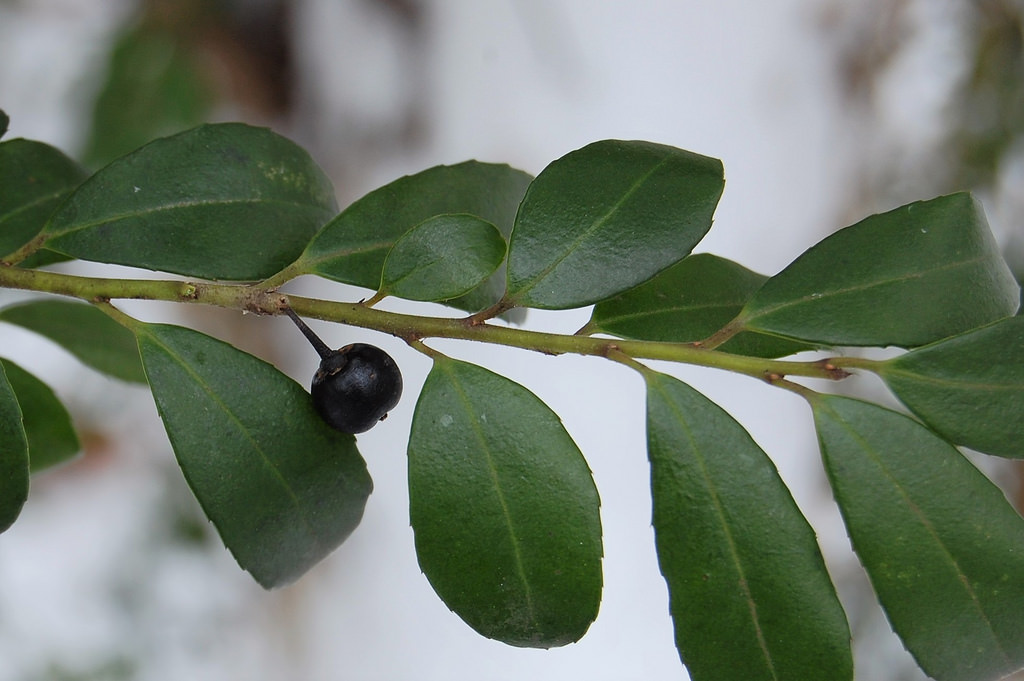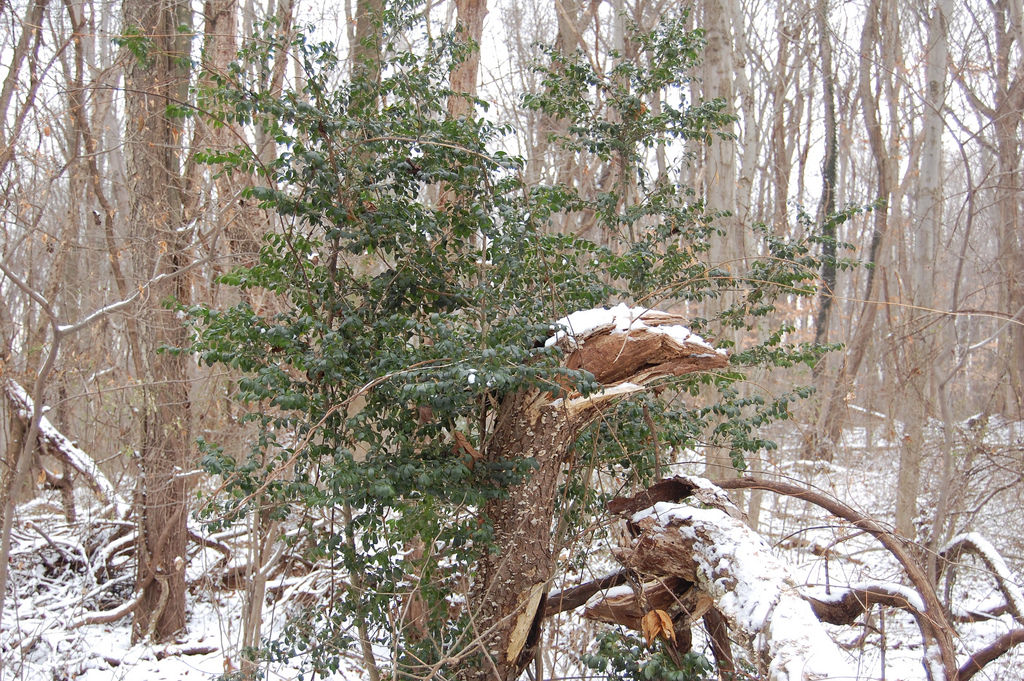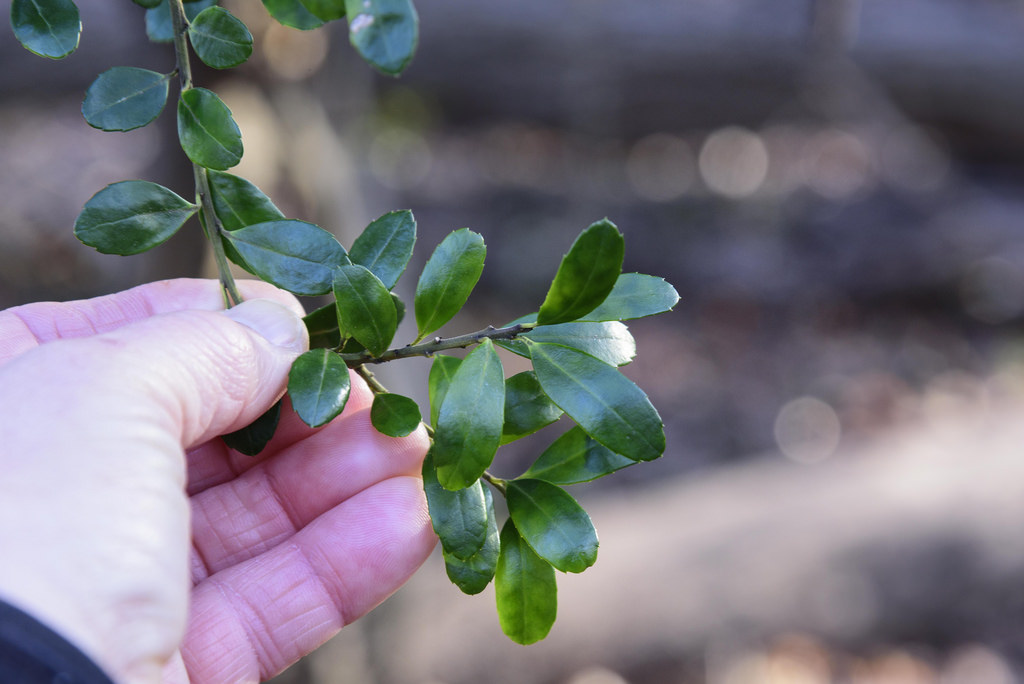Seasonality Snapshot
Map Snapshot








16 Records
Source: Wikipedia
| Ilex crenata | |
|---|---|

| |
| Scientific classification | |
| Kingdom: | Plantae |
| Clade: | Tracheophytes |
| Clade: | Angiosperms |
| Clade: | Eudicots |
| Clade: | Asterids |
| Order: | Aquifoliales |
| Family: | Aquifoliaceae |
| Genus: | Ilex |
| Species: | I. crenata
|
| Binomial name | |
| Ilex crenata | |
Ilex crenata, also known as Japanese holly or box-leaved holly, is a species of flowering plant in the family Aquifoliaceae, native to eastern China, Japan, Korea, Taiwan, and Sakhalin.[1]
It is an evergreen shrub growing to a height of 3–4 m (rarely 10 m) tall, with a trunk diameter up to 20 cm. The leaves are glossy dark green, small, 10–30 mm long and 10–17 mm broad, with a crenate (wavy) margin, sometimes spiny. The plants are dioecious (having separate male and female plants), with white, four-lobed flowers. The fruit is a black drupe (stone fruit) 5 mm diameter, containing four seeds. It grows well in acidic soil, between a pH of 3.8 and 6.0.[2][3][4]
-
close-up of flowers
-
close-up of drupes
Cultivation
[edit]
Ilex crenata is grown as an ornamental plant for its dense evergreen foliage, and is a popular plant among bonsai enthusiasts.[5] It is superficially similar in appearance to boxwood (box), and is often used in similar situations, such as low hedging; but it can readily be distinguished from boxwood by its alternate, not opposite, leaf arrangement.[6]
Numerous cultivars have been selected, including plants with the leaves variegated (e.g. 'Golden Gem', 'Shiro-Fukurin'), dark green (e.g. 'Green Lustre'), or greyish-green (e.g. 'Bad Zwischenahn'); with yellow fruit (e.g. 'Ivory Hall'); and with an erect habit (e.g. 'Chesapeake'), spreading (e.g. 'Green Island', 'Hetzii'), or dwarf (e.g. 'Mariesii', 'Stokes').[4] The cultivars 'Golden Gem'[7] and ‘Fastigiata’ (Fastigiata Group)[8] have gained the Royal Horticultural Society's Award of Garden Merit.[9]
References
[edit]- ^ "Ilex crenata". Germplasm Resources Information Network. Agricultural Research Service, United States Department of Agriculture. Retrieved 2018-01-12.
- ^ Osaka hundred trees: Ilex crenata Archived 2009-06-08 at the Wayback Machine (in Japanese; google translation)
- ^ Okayama Science University: Ilex crenata Archived 2007-10-11 at the Wayback Machine (in Japanese; google translation)
- ^ a b Huxley, A., ed. (1992). New RHS Dictionary of Gardening. Macmillan ISBN 0-333-47494-5.
- ^ "Japanese Holly Bonsai". BonsaiDojo.net. 31 January 2014.
- ^ "Japanese Holly: A Subtle Gem". Seattle Japanese Garden. 2018-01-04. Retrieved 2024-03-29.
- ^ "RHS Plant Selector". Royal Horticultural Society. Archived from the original on 2013-06-15. Retrieved 2013-05-20.
- ^ "RHS Plantfinder - Ilex crenata 'Fastigiata'". Retrieved 7 March 2018.
- ^ "AGM Plants - Ornamental" (PDF). Royal Horticultural Society. July 2017. p. 52. Retrieved 9 March 2018.




